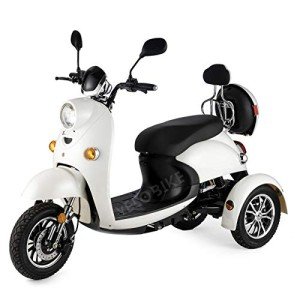
Veleco Faster Scooter
Add a review FollowOverview
-
Founded Date October 12, 2013
-
Sectors Restaurant / Food Services
-
Posted Jobs 0
-
Viewed 16
Company Description
Guide To Velco: The Intermediate Guide For Velco
Velcro: A Revolutionary Fastening Solution
Intro
Velcro, a name that has actually nearly become synonymous with hook-and-loop fasteners, has actually changed the way we think of attaching materials. Often a staple in various markets and homes, Velcro uses a basic yet reliable solution to secure items without the need for buckles, buttons, or zippers. This article explores the origins, systems, applications, and advantages of Velcro as well as resolving some regularly asked questions.
The Origins of Velcro
Velcro was developed in the late 1940s by Swiss engineer George de Mestral. After a hunting journey in the Alps, Mestral became fascinated by the burrs that stuck to his canine’s fur. Upon closer evaluation, he realized they operated through a system of small hooks that captured anything with a loop, including fabric and fur. Recognizing the potential of this natural attachment mechanism, Mestral started a journey to recreate it in an artificial kind. By 1955, he had patented his creation, branding it “Velcro,” a mix of the French words “velours” (velvet) and “crochet” (hook).

How Velcro Works
Velcro includes 2 different pieces: a hook side and a loop side. These 2 parts interlock when pressed together, producing a strong bond that can be easily launched with a simple pull. The functioning of Velcro can be broken down into these main components:
| Component | Description |
|---|---|
| Hook Side | This side includes small hooks that catch and keep loops. |
| Loop Side | This side includes soft loops developed to accept hooks when gotten in touch with. |
Mechanism of Fastening
- Interlocking: The hooks on one side capture the loops on the other, developing a physical interlock.
- Strength: The number of hooks and loops guarantees a substantial holding strength, making it ideal for both light and durable applications.
- Relieve of Use: Velcro can be disengaged and re-engaged numerous times without losing its efficiency, setting it apart from more traditional attachment approaches.
Applications of Velcro
Velcro has actually found application throughout a myriad of sectors, including:
-
Fashion Industry
- Sportswear
- Shoes (specifically kids’s footwear)
- Accessories (belts, bags)
-
Medical Field
- Orthopedic gadgets
- Plasters
- Prosthetics
-
Automotive and Aerospace
- Seat covers
- Interior linings
- Safety gear
-
Home Items
- Curtains
- Carpets
- Organizers
-
Industrial Use
- Cabling
- Devices securing
- Tools storage
Benefits of Velcro
The popularity of Velcro can be attributed to numerous advantages it offers over standard attaching methods:
- Quick and Easy to Use: No tools are required, making it user-friendly.
- Flexible: Works on numerous surface areas and products.
- Adjustable: Allows for easy adjustment in size (e.g., straps).
- Durable: Holds up under recurring usage.
- Washable: Maintains its function even after washing.
Possible Drawbacks
While Velcro is beneficial in lots of contexts, there are some limitations to be familiar with:
- Noise: The noise of Velcro being pulled apart can be loud in peaceful settings.
- Wear and Tear: Over time, extreme use might lead to fraying or lowered effectiveness.
- Limitations with Heavy Loads: While it can hold substantial weight, it may not appropriate for incredibly heavy items.
FAQs about Velcro
1. Is Velcro water resistant?
Yes, Velcro can be made from waterproof products, making it appropriate for outdoor and marine applications.
2. Can Velcro be recycled?
Definitely! Velcro is designed for repeated use, and numerous items can be resealed and opened several times.
3. How do you tidy Velcro?
Cleaning Velcro is basic. You can use a lint roller or a soft brush to get rid of particles. For persistent dirt, it might be rinsed gently with water.
4. Is Velcro strong enough to change zippers?
In numerous applications, yes, Velcro can efficiently change zippers, particularly in instances where quick fastening and loosening are required.
5. Are there different types of Velcro?
Yes, there are many types, including varying widths, velco colors, adhesive strengths, and materials designed for various applications (i.e., high-temperature, outside, etc).

Velcro has shown to be a flexible and ingenious securing service that has penetrated multiple sectors, improving both everyday life and industrial applications. Its ability to provide a trusted and easy-to-use technique of attaching makes it a long-lasting element of modern style. From casual garments to innovative medical applications, Velcro continues to uphold its reputation as a staple attachment technique for numerous uses. Whether it’s for the fashion enthusiast or a professional in the medical field, Velcro stays an unrecognized hero worldwide of attaching innovation.
By changing how we connect and protect products, Velcro is a testimony to the power of ingenious thinking and simpleness in style. As technology advances, we can just prepare for even more imaginative applications for this amazing invention in the future.



